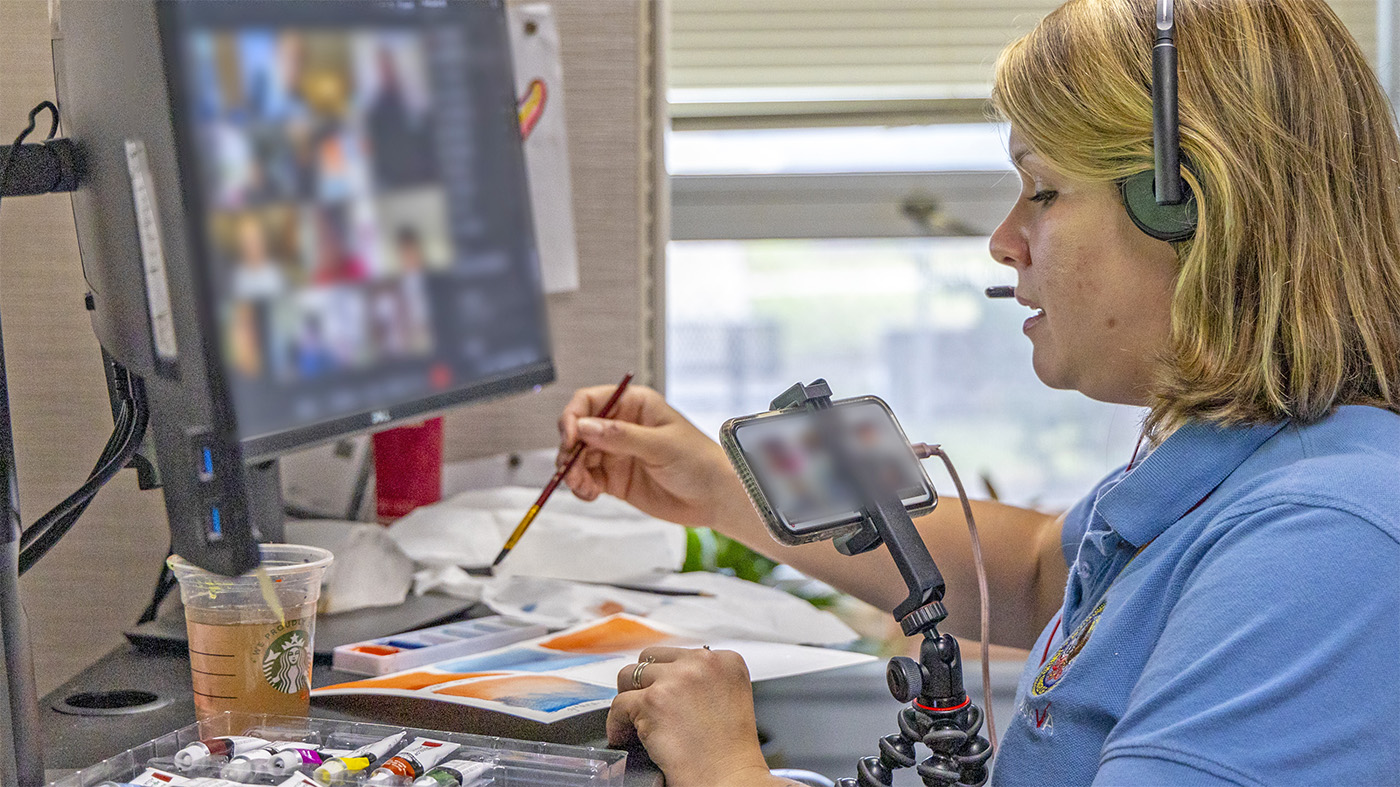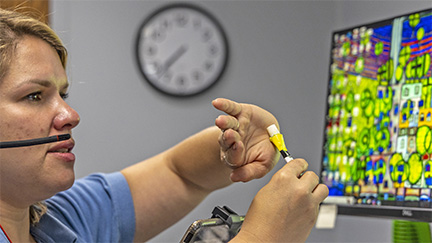It might be a simple brushstroke to some, a fleeting touch of paint to canvas, but at Edward Hines Jr. VA, Natalie Ho perceives it as a connection, a lifeline.
As a social worker in Hines’ Caregiver Support Program, she noticed a growing isolation among the program’s 600 caregivers during the pandemic and wanted to find a way to help participants embrace their whole person and reconnect with themselves.
“I think caregivers were some of the hardest hit people during the pandemic, since some caregivers tend to feel very isolated and struggle to engage in self-care,” Ho said. She believes caregivers are often family, friends or neighbors shouldering the weight of ensuring loved ones remain comfortable and safe.
Ho’s diverse background, melding fine arts with social work, paved the way for an innovative response to this challenge: holding virtual creative arts workshops. “I’m really passionate about how art can be very healing for people. I’ve always tried to incorporate art into my social work practice,” she said.
Caregiver interest quickly grew and Ho expanded her idea through VA’s Spark-Seed-Spread program, which provides VA employees funding and resources to innovate and improve experiences throughout the organization. Ho is completing Seed, a year-long project testing a fully functional prototype and developing resources and partnerships for her classes.
These partnerships included various organizations that saw the benefit of helping caregivers. Help Heal Veterans donated knitting and dreamcatcher craft kits. The Illinois VFW Auxiliary provided a large donation of watercolor kits and the Wheaton Public Library donated magazines for art journaling. Hines VA’s Whole Health program and other hospital services provided additional supplies. “I can’t thank all these programs and community partners enough.”
“We want to support you so you can care for your Veteran.”
Over the past year, Ho has held virtual and in-person classes. Originally, her concept consisted of single class but expanded to four-week workshops. Watercolor painting is the most popular class.
Caregiver Linda Kirby’s experience illuminates the project’s impact. Engaging in Ho’s watercolor class, she found more than just an artistic outlet. “This class has been helpful. I’d been trying to get back into art and now I have. It gives me time to immerse myself into something that isn’t stressful for a while,” Kirby said.
For caregiver Mary Turner, the class became a shared canvas of expression with her husband. The couple discusses art they see throughout the day, including the medium and techniques. “The two of us get to share something together. It’s opened up a whole different conversation,” Turner said.
“You have to put on your own oxygen mask first before you put on the other person’s,” Ho said. “You must take time out for yourself because you’re not going to be able to do this long term. You’re going to get burned out. If it’s not knitting, if it’s not watercolor, that’s fine. Whatever it is, we want to support you and connect with you so you can continue to care for the Veteran.”
Topics in this story
More Stories
Study underscores important role COVID vaccination can have in protecting Veterans from infection and reducing long-term health consequences
Columbia VA’s robotic surgery teams completed their 800th robotic surgery and are on schedule to hit 1,000 by the end of the year.
In a decentralized clinical trial, Veterans can participate from their own homes or local VA instead of having to travel to a research site.







